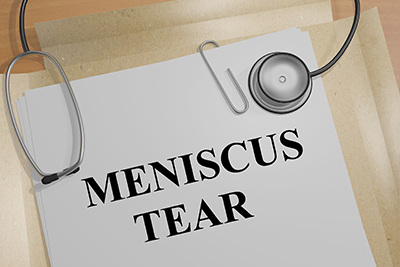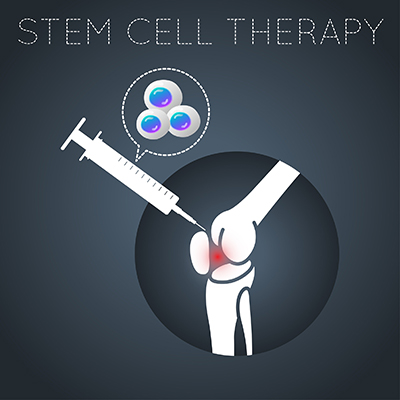 My Knees Hurt! Fix it!
My Knees Hurt! Fix it!Nothing is more irritating than wanting to do something you love and can’t because your knees hurt! Knee pain is a leading cause of disability. It can cause you to miss sports activities, playing games with children and grandchildren, and even just working in your yard. Knee pain is often a product of several risk factors that tend to compound the problem:
- Excess weight. Being overweight or obese increases stress on your knee joints, even during ordinary activities such as walking or going up and down stairs. It also puts you at increased risk of osteoarthritis by accelerating the breakdown of joint cartilage.
- Lack of muscle flexibility or strength. A lack of strength and flexibility can increase the risk of knee injuries. Strong muscles help stabilize and protect your joints while muscle flexibility can help you achieve full range of motion.
- Certain sports or occupations. Some sports put greater stress on your knees than do others. Alpine skiing with its rigid ski boots and potential for falls, basketball's jumps and pivots, and the repeated pounding your knees take when you run or jog all increase your risk of knee injury. Jobs that require repetitive stress on the knees such as construction or farming also can increase your risk.
- Previous injury. Having a previous knee injury makes it more likely that you'll injure your knee again. -Mayo Clinic
Meniscus Tears

The complex structure of connective tissue in the knee makes this joint particularly vulnerable to injury. The knee carries the full weight of your body, and pressure from physical movement that rotates or twists your knee can lead to a tear in the meniscus. The menisci are c-shaped pieces of cartilage that act as a shock absorber and fill the space between between the bones of the knee to assist in providing smooth movement. The small collagenous disc is curved in shape, fitting along the contour of the tibia. Each knee has two menisci.
A tear of the meniscus is one of the most common injuries and has two primary causes:
- Traumatic injury is common in sports or other physical activity. Radial tears are the most common form and occur in the avascular portion of the meniscus. This extremely limited blood supply prevents healing without treatment.
- Degenerative changes of the knee, referred to as intrasubstance changes, occur when the menisci become thin due to wear and age. This condition contributes to a torn meniscus with little or no trauma due to the micro tears that develop over time. These small lesions that develop in the meniscus are often found in the early stages of osteoarthritis.
Symptoms:
- Pain in generally one side of the knee
- knee locks
- difficulty bending and straightening knee
- swelling and stiffness
- painful when used but pain can subside when not in use
Read more about meniscus tears.
Ligament tears and sprains
The bones of the knee are held together by connective tissue called ligaments, rope-like pieces of tissue that attach the three bones of the knee and stabilize the joint. A sprain occurs when a ligament is stretched too far, causing weakening of the tissue and often tears of the ligament tissue. The most common symptoms of a knee sprain are pain and swelling that generally appear immediately. “Sprain” alone is not a helpful diagnosis as it does not designate which ligament is injured and the severity of the injury. Severity is determined by degree of tear in the tissue which are designated by Grades.


The knee has four main ligaments belonging to two different categories, each with different functions.

Collateral ligaments.These connecting tissues support the sides of your knee and allow the joint to move from side to side.
- Medial collateral ligament (MCL).Attaches the femur to the tibia along the inside of your knee.
- Lateral collateral ligament (LCL).Runs along the outside of your knee, linking your femur to the small bone in your leg called the fibula.
Cruciate ligaments.These two ligaments cross inside your knee joint in an “X” shape. They allow your knee to move forward and backward without moving too far sideways.
- Anterior cruciate ligament (ACL).Stretches diagonally across the middle of your knee and attaches the femur to the tibia. The ACL is your knee’s weakest and most commonly injured cruciate ligament. Learn more.
- Posterior cruciate ligament (PCL).Lies behind the ACL and stabilizes your shinbone. The PCL is less prone to injury than the ACL.
Treatment

Many soft tissue injuries can be treated with Ice to reduce excessive inflammation and rest. Treatment, however, remains necessary in most cases due to lack of vascular structure in collagenous tissue. Lack of treatment causes knee instability and likelihood of further injury. Learn more.
Traditional treatments have often been NSAIDs or surgery. NSAIDs reduce inflammation, therefore reducing pain. Unfortunately, inflammation is our body’s natural method of healing. Millions of tiny cells rush to the injury to perform their individual role in the process. Learn more. So, when inflammation stops, healing stops also. Certainly, excessive inflammation is to be avoided, but treatment by NSAIDs is not the answer.
When a tear to a ligament completely severs the tissue, surgery is generally required. The majority of collagenous tissue injuries to the knee, however, can be successfully treated without the extensive down time and pain from invasive surgery. Regenerative Orthopedics, Platelet Rich Plasma Injections (PRP) and Stem Cell Therapy, are designed to increase the regeneration of cells, replacing damaged tissue to heal naturally... only faster and more completely.
For example, previous treatment for meniscus injury was to remove the meniscus tissue. Innovative regenerative procedures allow meniscus and ligament injuries to be treated without surgery by utilizing the body’s own healing cells to enhance the repair process. Damaged collagenous tissue is generally unable to heal on its own due to limited blood supply. Interventional procedures provide condensed cells from your own body to heal tissue damage. Studies show that Bone Marrow Stem Cell Therapy and PRP can improve joint function and reduce pain and inflammation.
ACL injuries can also be successfully treated with Regenerative Orthopedic Procedures, providing non-invasive methods that heal more quickly and do not require extensive rehabilitation. Stem Cell Therapy is designed to help the body replace depletion of healing cells. With increased age or chronic injury, often the optimal amount of stem cells is not available. Acute or chronic injury, arthritis and poor cellular health can disrupt the availability of stem cells needed for tissue repair, resulting in the body's inability to keep pace with healing requirements. When this demand outpaces the supply, the body needs a little help. Stem Cell Therapy and PRP help treat knee injuries, providing patients with alternatives to traditional, often less effective procedures.
FAQ
Will walking make my knee pain worse?
Cartilage tissue is composed of 75% fluids to help support weight from the body and lubricate the joint. Walking helps to keep the joint lubricated with this synovial fluid. Research has shown that synovial fluid slowly leaks from the porous cartilage after sitting or standing for long periods, a reason why jour knees feel stiff after sitting for a long time. This gradual loss of fluids decreases cartilage thickness, increasing friction on cartilage tears. The same research found that continuous movement encourages cartilage to reabsorb the fluid.
Activities that cause pain or mechanical dysfunction should be stopped. These may include deep squatting, pivoting, jumping, climbing and similar movements. Moderate amounts of walking, however, help to strengthen muscle tissue and help to increase blood circulation.
https://www.sciencedaily.com/releases/2015/10/151021104419.htm
Prevention
Although it's not always possible to prevent knee pain, the following suggestions may help ward off injuries and joint deterioration:
- Keep extra pounds off. Maintain a healthy weight; it's one of the best things you can do for your knees. Every extra pound puts additional strain on your joints, increasing the risk of injuries and osteoarthritis.
- Be in shape to play your sport. To prepare your muscles for the demands of sports participation, take time for conditioning.
- Practice perfectly.Make sure the technique and movement patterns you use in your sports or activity are the best they can be. Lessons from a professional can be very helpful.
- Get strong, stay flexible. Weak muscles are a leading cause of knee injuries. You'll benefit from building up your quadriceps and hamstrings, the muscles on the front and back of your thighs that help support your knees. Balance and stability training helps the muscles around your knees work together more effectively. And because tight muscles also can contribute to injury, stretching is important. Try to include flexibility exercises in your workouts.
- Be smart about exercise. If you have osteoarthritis, chronic knee pain or recurring injuries, you may need to change the way you exercise. Consider switching to swimming, water aerobics or other low-impact activities ‐ at least for a few days a week. Sometimes simply limiting high-impact activities will provide relief. -Mayo Clinic

